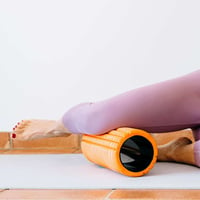Managing Frozen Shoulder: Causes, Symptoms, & Tips

Frozen shoulder, also known as adhesive capsulitis, is a condition that causes stiffness, pain, and reduced range of motion in the shoulder joint. It can develop gradually and worsen over time, significantly impacting daily activities, work, and even sleep.
While frozen shoulder can be frustrating and painful, the good news is that physical therapy, mobility exercises, and proper pain management can help restore function and reduce discomfort. Below, we’ll explore the causes, symptoms, and expert-backed strategies to help you effectively manage frozen shoulder and regain mobility.
What Causes Frozen Shoulder?
Frozen shoulder occurs when the connective tissue surrounding the shoulder joint thickens and becomes inflamed, restricting movement. Although the exact cause isn’t always clear, several factors can contribute to its development.
Common Causes & Risk Factors
- Prolonged Shoulder Immobilization – After surgery, injury, or prolonged inactivity, the shoulder joint can become stiff and tight.
- Diabetes & Metabolic Conditions – People with diabetes, thyroid disorders, or autoimmune diseases are at higher risk.
- Inflammation or Overuse – Chronic shoulder inflammation from conditions like rotator cuff injuries or arthritis can trigger frozen shoulder.
- Posture-Related Issues – Poor posture or slouching for extended periods can increase stress on the shoulder joint.
For a deeper look at risk factors, visit NYU Langone Health’s frozen shoulder resource.
Recognizing Symptoms of Frozen Shoulder
Frozen shoulder typically progresses through three stages, each lasting several months to years if untreated:
1. Freezing Stage (Pain & Stiffness Begin)
- Gradual onset of shoulder pain, especially at night
- Increasing difficulty with overhead and reaching movements
- Stiffness that worsens over time
2. Frozen Stage (Severe Mobility Restrictions)
- Pain may decrease, but range of motion becomes severely limited
- Difficulty with daily tasks like dressing, lifting, or reaching behind the back
- Shoulder feels “locked” or stuck in place
3. Thawing Stage (Gradual Improvement)
- Slow recovery of movement and flexibility
- Pain continues to decrease as mobility improves
- May take months to years for full recovery
How Can Physical Therapy Help?
If you’re searching for physical therapy near you for frozen shoulder, working with a shoulder mobility specialist in NYC can be essential for reducing stiffness, restoring movement, and preventing further restrictions.
1. Gentle Mobility & Stretching Exercises
- Pendulum swings and passive range-of-motion stretches to improve flexibility.
- Wall walks and overhead stretches to increase shoulder elevation.
2. Manual Therapy & Joint Mobilization
- Hands-on techniques to release tight tissues and improve circulation.
- Soft tissue massage to reduce muscle guarding and tension.
3. Strengthening Exercises for Shoulder Stability
- Isometric strengthening to activate shoulder stabilizers without excessive strain.
- Gradual resistance training for the rotator cuff and scapular muscles.
4. Pain Management Strategies
- Heat therapy before exercises to relax tight muscles.
- Cold therapy after exercises to control inflammation.
Self-Care & Prevention Strategies for Frozen Shoulder
Alongside physical therapy in NYC, adopting the following self-care techniques can help manage symptoms and prevent further stiffness.
1. Stay Active & Avoid Prolonged Immobilization
- Even if movement is painful, gentle daily exercises can help prevent worsening stiffness.
- Avoid keeping the shoulder in one position for extended periods.
2. Improve Posture & Shoulder Mechanics
- Maintain upright posture to prevent unnecessary strain on the shoulder.
- Avoid slouching or working with arms positioned too far forward.
3. Apply Heat Before Stretching
- Using warm compresses or showers before movement can help relax muscles.
- Heat increases blood flow, making stretching more effective.
4. Modify Activities to Reduce Strain
- Use a pillow to support the shoulder while sleeping.
- Adjust workstations to keep arms relaxed and avoid excessive reaching.
5. Follow a Structured Exercise Program
- Working with a physical therapist in Brooklyn or Manhattan can ensure proper technique and gradual progression.
- Consistency with stretching and strengthening routines is key to recovery.
When to Seek Professional Help
If symptoms persist beyond a few months, significantly limit daily function, or worsen over time, seeking medical care is essential. A doctor may recommend:
- Imaging tests (X-rays, MRI) to rule out underlying issues.
- Corticosteroid injections to reduce severe inflammation.
- Minimally invasive procedures (if conservative treatments fail).
A physical therapy place near you specializing in shoulder mobility and rehabilitation can provide a customized treatment plan to restore function and reduce pain.
Final Thoughts
Frozen shoulder can be painful and limiting, but with the right rehabilitation approach—including physical therapy in NYC—you can regain mobility and prevent long-term stiffness. If you’re looking for expert care, consider visiting a physical therapist in Queens or your nearest PT clinic in Manhattan for a personalized recovery program.
For more expert insights on shoulder health, mobility restoration, and pain management, explore our blog for the latest on physical therapy, joint care, and movement optimization.




